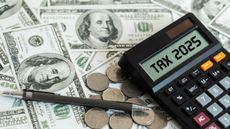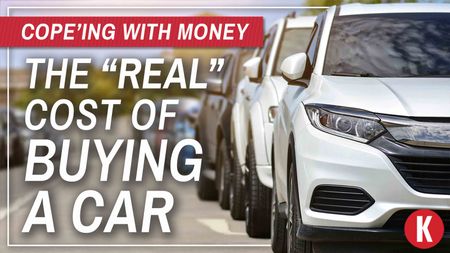Get the Best Deal on a Used Car
Prices are higher than ever, but we help you get the most for your money.

Lessons from the Great Recession are still resonating with car buyers. Choose a new vehicle and depreciation slices up to 20% off the value in the first year. Choose used and someone else takes that financial hit. But all the converts to used cars have created an unintended consequence: The used-car supply is tight and prices are at all-time highs. That doesn't mean deals aren't out there. But to find them, you'll have to do a little more research, look in new areas and bargain smarter for the car you want.
SEE OUR SLIDE SHOW: 10 Best Values in Used Cars, 2012
It may be two to three years before the supply—and prices—get back to normal levels. Tom Kontos, chief economist for Adesa, a vehicle-auction company, says new-car sales and leasing recovered in 2010, so three-year-old vehicles will start coming back into the market next year and put some downward pressure on prices.

Sign up for Kiplinger’s Free E-Newsletters
Profit and prosper with the best of expert advice on investing, taxes, retirement, personal finance and more - straight to your e-mail.
Profit and prosper with the best of expert advice - straight to your e-mail.
Find the deals
With gas near $4 a gallon, fuel-efficient vehicles are in high demand—and their prices are high, too. But manufacturers began focusing on improving small-car safety and amenities in 2008, so used-car buyers have more palatable choices now—and that is keeping a ceiling on prices. (Even so, soaring prices on some models are skewing the used-car market—see the box at right.) Your best opportunity for a bargain is among used cars that were new-model bestsellers. For example, a recent search on AutoTrader.com for 2009 compacts in Atlanta turned up 139 Honda Civics and 60 Volkswagen Jettas, but only 18 Nissan Sentras and 11 Ford Focuses. The more you have to choose from, the more room you have to negotiate.
Fuel costs are driving prices higher for midsize vehicles as well, but there’s a silver lining there, too. A number of redesigned models in this segment have been introduced recently or are coming to market soon—the Toyota Camry, Chevy Malibu, Ford Fusion and Nissan Altima among them. Jonathan Piol, who is pricing manager for Edmunds.com, says these new models will spur owners who have been holding on to their old midsize cars to trade them in, which should add to the number of used vehicles.
You can find deals on full-size cars and large SUVs now that they're not in vogue. In particular, look for bargains on the truck-based, body-on-frame versions of SUVs that have recently been redesigned as crossovers, such as the Ford Explorer and Dodge Durango. Used crossovers are in high demand, however, because they’re more fuel-efficient than their body-on-frame brethren and have the same number of seats. And pickup truck sales have increased as the economy has picked up, so screaming bargains in trucks are also hard to find.
Do your homework
After Noelle and Earl Peterson of Denver had their second child last year, they decided it was time for a new car. Noelle’s 2004 Volvo V70 wasn't big enough to fit her whole family when her parents came to visit, and bending over to secure the child seats was a pain. She knew used-car prices were high, but she was determined to find a deal. She consulted the Consumer Reports reliability ratings to narrow her choices, checked safety ratings and used the appraisal tool on Edmunds.com to find a good ballpark price before she hit the dealers’ lots.
The result: a 2007 Toyota Sienna LE. The one she found has all-wheel drive to get the family—or as many as seven passengers—over the river and through the woods in the winter. The dealer wanted $15,500, but Noelle stuck to her guns—and the Edmunds-recommended price—and talked him down to $14,000.
Once you've decided what type of car you want, hit the Web to find out more. In addition to its appraisal tool, Edmunds.com has reviews to help narrow your choices, and Consumer Reports has reliability ratings parsed by model year. A subscription to the Web site costs $30 annually ($20 if you already subscribe to the magazine), or $6.95 a month. You can check safety ratings on SaferCar.gov and at the Insurance Institute for Highway Safety site.
Next, find your ride—preferably several, so you can persuade sellers to compete for your offer. Cars.com and Autotrader.com are two of the biggest auto-sales sites and offer the most listings. Or check out CarGurus.com. It aggregates listings from Autobytel, Vehix and other sites and analyzes prices based on listings in your area for the same make, model and features. Each vehicle is rated from "Great Deal" to "Overpriced" and includes the amount over or under the "Instant Market Value"—CarGurus' fair retail price.
When it's time to negotiate the price, use the other models you’ve found with similar features and mileage—and lower prices—as bargaining chips to knock down the asking price. If a dealer won’t budge, walk away.
To protect your wallet while completing the sale, come to the table with preapproved financing. Five-year used-car loans recently averaged 3.78%, according to Bankrate. Credit unions typically offer lower rates than banks and most dealerships (see our slide show 7 Great Credit Unions Anyone Can Join). So that the negotiations don't get muddled, separate the trade-in from the purchase. Do the same pricing research on your trade-in that you did for the used car you're buying. Note the difference between a trade-in price and a private-party sale. Dealers pay less for cars because they prep them for resale—and, of course, want to make a healthy profit. Your best bet may be to sell it yourself. Noelle Peterson sold her Volvo for $6,000 after the dealer offered her $3,500.
Purchase peace of mind
Reliability ratings on three-year-old vehicles are better than ever—up 13% from last year, according to J.D. Power. But if you're nervous about buying used, consider a certified pre-owned vehicle. Only low-mileage, newer models (three to four years old) that have undergone a rigorous inspection make the cut, and they come with extra warranty coverage.
Typically, CPOs come with one year or 12,000 miles of comprehensive warranty coverage and two extra years of powertrain coverage from the purchase date (plus any time left on the original warranty). Volvo tops the charts in IntelliChoice.com's annual ranking of CPO programs. The carmaker offers six years or 100,000 miles of comprehensive coverage from the original in-service date (when the car was new) and free factory-scheduled maintenance, plus roadside assistance for that period.
Certified vehicles can cost from several hundred to several thousand dollars more than noncertified vehicles. But special financing rates are often available to temper the sting of a higher price. For example, Hyundai offers financing as low as 2.49% for up to 60 months on all its CPO vehicles. Since the recession hit, CPOs have been in high demand, so they can be harder to find and you may have less negotiating room. (Be sure the vehicle is certified under a manufacturer-based program, not one from the dealer. Those programs tend to be just extended warranties in disguise.)
If you’re not going the CPO route, protect yourself by ordering a CarFax or AutoCheck report on any vehicle you're considering seriously. They detail the vehicle's history, including accident reports, odometer readings, dealer maintenance and repairs, and any known flood damage or title fraud. Dealers may offer these reports free. If not, you’ll pay $30 to $35 for a single report or $45 for several.
Next, get the car inspected. Your local mechanic may charge $50 to $100 to give it a once-over. If you don't have someone you trust, you can hire an inspector anywhere in the U.S. through AiM Mobile Inspections. A 150-point inspection, complete with photographs to document the VIN number, odometer reading and any damage, costs $129. AiM's team works with the seller to arrange the inspection and sends you the report once it’s finished.
If you're purchasing from a dealership, you'll likely be offered an extended warranty. These warranties are rife with exclusions and often charge a deductible for each repair, so you are usually better off putting the money you'd pay for an extended warranty into a savings account earmarked for repairs. If you don't need it, you have a down payment on your next vehicle.
Get Kiplinger Today newsletter — free
Profit and prosper with the best of Kiplinger's advice on investing, taxes, retirement, personal finance and much more. Delivered daily. Enter your email in the box and click Sign Me Up.

-
 Don’t Make These Five Mistakes on Your Tax Return
Don’t Make These Five Mistakes on Your Tax ReturnTax Filing The IRS warns taxpayers to watch out for these common errors as they prepare to file.
By Gabriella Cruz-Martínez Published
-
 Cooling February CPI Lifts Rate Cut Hopes: What the Experts Are Saying
Cooling February CPI Lifts Rate Cut Hopes: What the Experts Are SayingWhile the Fed is likely to keep interest rates unchanged next week, an encouraging February CPI report raises the odds for more easing later this year.
By Karee Venema Published
-
 Gas-Saving Tips That Actually Work
Gas-Saving Tips That Actually WorkThese are gas-saving tips that will actually work for you and your car this year.
By David Muhlbaum Last updated
-
 Want to Lease an EV? The Tax Credit 'Loophole' for That Could Go Away Soon
Want to Lease an EV? The Tax Credit 'Loophole' for That Could Go Away SoonTax Credits If you are deciding whether to lease or buy a car, here's what you need to know about the EV lease tax credit.
By Kelley R. Taylor Last updated
-
 Car Buying in a Topsy-Turvy Market
Car Buying in a Topsy-Turvy MarketYou need a new car? Good luck with that! What should you do? We've got some answers.
By Katherine Reynolds Lewis Last updated
-
 Watch Out for Flood-Damaged Cars from Hurricane Ian
Watch Out for Flood-Damaged Cars from Hurricane IanBuying & Leasing a Car In the wake of Hurricane Ian, more flood-damaged cars may hit the market. Car prices may rise further because of increased demand as well.
By Bob Niedt Last updated
-
 Car Buyers: The 3-Day Grace Period Is Just a Myth!
Car Buyers: The 3-Day Grace Period Is Just a Myth!Buying & Leasing a Car Many car buyers think they have three days after making a purchase to return a car. Here’s where they’re going wrong, and what they should do instead to get a decent used car.
By H. Dennis Beaver, Esq. Published
-
 PODCAST: Car-Buying in an Inflated Market with Jenni Newman
PODCAST: Car-Buying in an Inflated Market with Jenni NewmanBuying & Leasing a Car With cars both scarce and expensive these days, what to do if you want – or need – a new ride? Car-buying strategist Jenni Newman of Cars.com shares some tips. Also, more on the magical 9% savings bond.
By David Muhlbaum Published
-
 The "Real" Cost of Buying a Car
The "Real" Cost of Buying a CarBrandon Copeland Atlanta Falcons linebacker and Kiplinger contributing editor Brandon Copeland illustrates how car prices are far more than meets the eye.
By Brandon Copeland Published
-
 How to Get a Car Deal in This Market
How to Get a Car Deal in This MarketBuying & Leasing a Car Low inventories mean it’s hard to haggle on price, but you can still negotiate on financing when shopping for a new or used car.
By Rivan V. Stinson Published